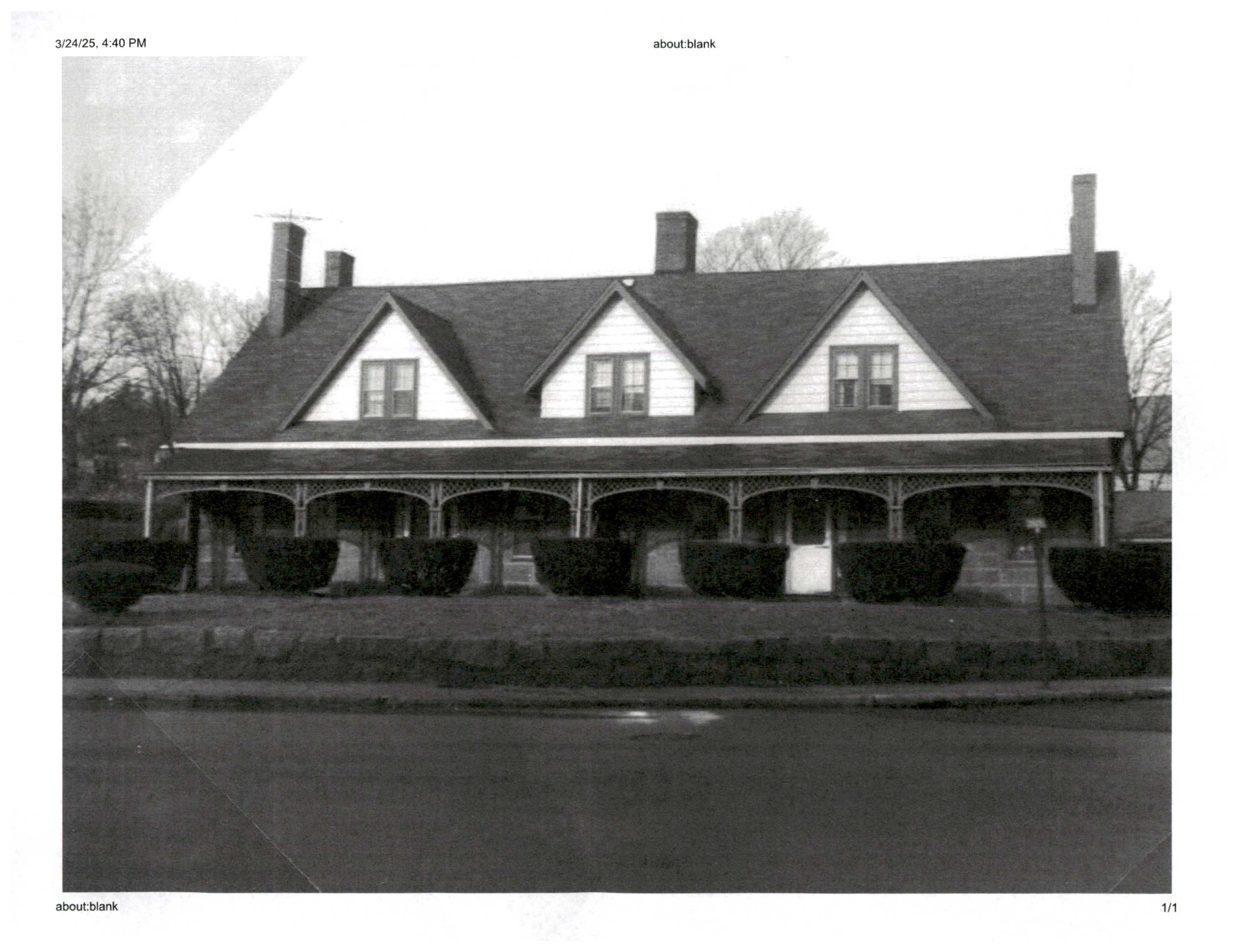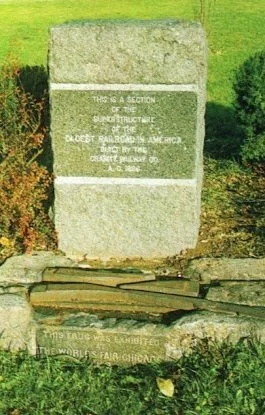
Milton and the Granite Railway
The Granite Railway—America's First Railroad
THIS IS A SECTION OF THE SUPERSTRUCTURE OF THE OLDEST RAILROAD IN AMERICA
BUILT BY THE GRANITE RAILROAD CO.
A. D. 1826
On the bottom of the monument it is inscribed:
THIS FROG WAS EXHIBITED AT THE WORLD'S FAIR CHICAGO 1893
In 1826, the Massachusetts Legislature granted Thomas H. Perkins and others a charter to construct a railway, which opened on October 7 of the same year. The railway was designed to transport granite from the quarries in West Quincy, through East Milton, to the Neponset River.
The cities of Quincy and Milton share the honor of being home to the "first railroad" in America, as the approximately 3 ½-mile railway was located half in Quincy and half in Milton. The Granite Railway holds several historic firsts: it was the first in the country to operate under a charter, the first to incorporate, and the first to begin operations.
Granite quarried in West Quincy was worked at sheds in East Milton, then transported by rail to the Neponset River, where it was shipped to Charlestown for use in the construction of the Bunker Hill Monument. The creation of the railway significantly boosted the fledgling granite industry.
The railway cars, designed by railway pioneer Gridley Bryant, were specifically built to carry stone. These cars were constructed in the shop of wheelwright and blacksmith Willard Felt, located at the corner of what is now Adams and Squantum Streets in East Milton. The cars were moved by gravity and pulled by a team of horses from Quincy through East Milton—then known as “Railway Village”—to the Neponset River.
In 1846, the Granite Railway became part of the Old Colony Railroad. Operations on the East Milton branch ceased shortly after bus service was introduced. The construction of the Southeast Expressway later erased all traces of the original railway line.

